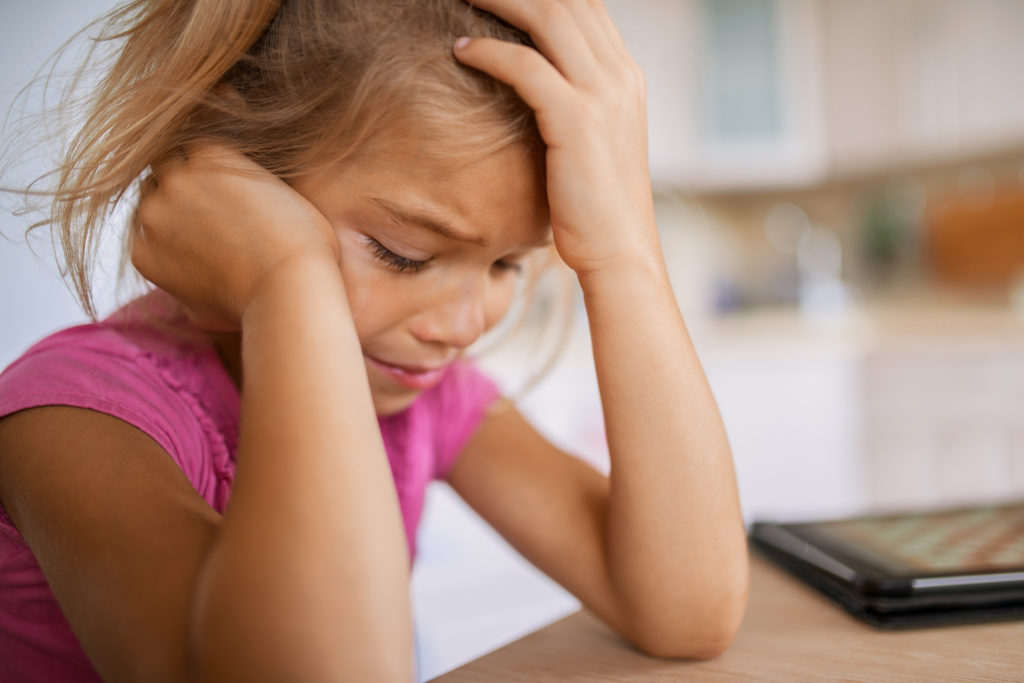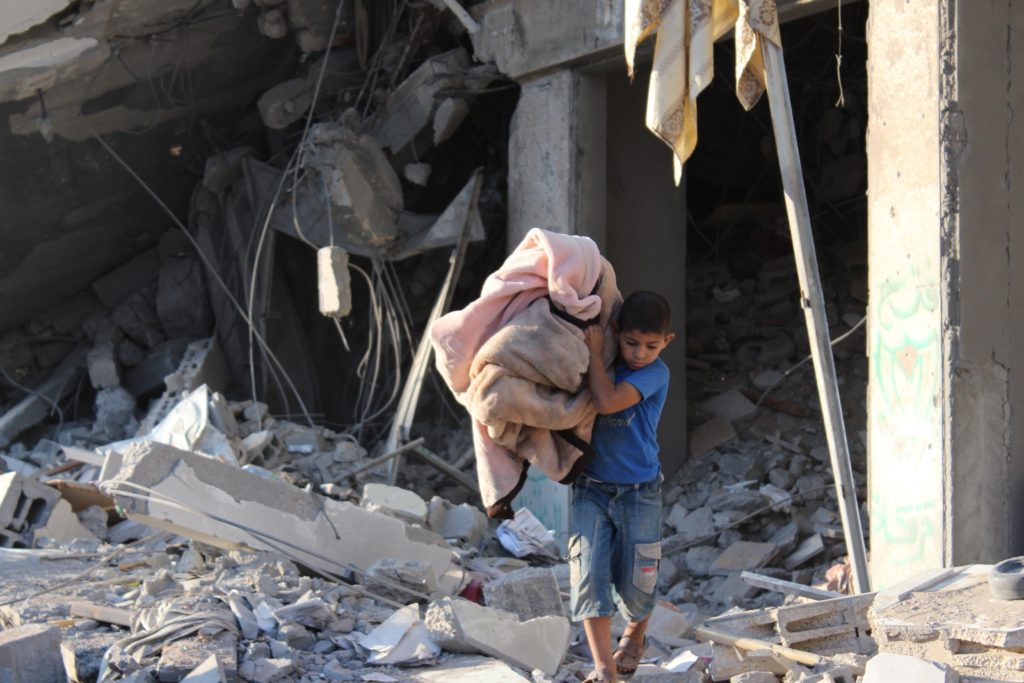Childhood Post-Traumatic Stress Disorder (PTSD) often emerges after a child experiences or witnesses a highly stressful event. This can lead to considerable emotional and physical distress, including reliving the trauma, nightmares, and disturbances in sleep patterns. The impact of trauma on children can leave a profound mark, affecting their relationships, daily activities, and overall well-being.

Identifying childhood PTSD
Post-Traumatic Stress Disorder (PTSD) in children can develop following exposure to a traumatic event that caused severe stress. These traumatic events could happen directly to the child or could be witnessed by them. PTSD can manifest in children when they have been exposed to distressing events such as severe injuries, the death or near death of a close family member or friend, or instances of violence (Centers for Disease Control and Prevention, 2023).
The children can go through considerable emotional and physical distress when reminded of the traumatic incident. They might frequently relive the trauma, encountering nightmares and distressing memories both during the day and at night. They often end up grappling with sleep issues, feelings of depression or irritability, heightened vigilance, diminished interest in once-enjoyed activities, and a sense of detachment or emotional numbness (Standford Medicine, n.d.).
When a child experiences symptoms that persist for longer than one month and these symptoms interfere with their daily life, relationships, and activities, they may be diagnosed with Post-Traumatic Stress Disorder (Centers for Disease Control and Prevention, 2023). Although the symptoms typically emerge within three months following the traumatic event, the onset can occur months or even years later (Standford Medicine, n.d.).
Triggers and causes explained
Armed conflicts significantly impact mental health, leading to prevalent conditions like PTSD and depression. For children, war trauma extends beyond specific diagnoses, impacting various developmental aspects including family relations, school performance, and overall life satisfaction. Today’s conflicts, primarily in low-income countries, entail multiple risk factors such as poverty, inadequate healthcare, and disrupted education systems. Children demonstrate heightened sensitivity to these stressors compared to adults (Catani C, 2018).
Moreover, in times of war, children can face two types of trauma: sudden traumatic incidents (type I) and ongoing exposure to adverse events causing dysfunctional coping (type II). This exposure results in higher rates of anxiety disorders, PTSD, increased aggression, antisocial behavior, and substance abuse compared to peers in peaceful regions. Continued exposure to violence in children hampers their ability to effectively manage emotions and form healthy relationships in the future (War Childhood Museum, n.d.).
Examining PTSD in conflict, resettlement, and abuse

Children in conflict zones like Gaza, continuously exposed to war and bombardments throughout their lives, experience profound effects. This toll is evident through prevalent symptoms such as convulsions, bed-wetting, fear, aggression, and heightened attachment to parents. During 2008-09, a study led by the Gaza Community Mental Health Programme (GCMHP) disclosed that 75% of children aged six and older displayed one or more symptoms of Post-Traumatic Stress Disorder (Sherwood H, 2023).
Unaccompanied refugee minors, notably vulnerable to mental health disorders such as PTSD, also continue to experience high prevalence rates even after resettlement. For instance, UNICEF reported 170,000 unaccompanied refugee minors seeking asylum in Europe, enduring harsh treatment and lacking basic necessities during their journey. The study revealed an overall PTSD prevalence of 42%, with Afghan minors showing the highest rate (56.9%), followed by minors from Iraq (36.8%) and Syria (33.4%) (Solberg Ø, 2020).
These high PTSD rates, especially among unaccompanied Afghan minors, highlight the urgent need for ongoing support and intervention for this vulnerable group. However, these problems are not exclusive to countries embroiled in war or plagued by poor living conditions. Even in developing countries, there is a significant struggle with PTSD among children.
In the United States, Child Protection Services handle around three million reports annually, affecting 5.5 million children, of which about 30% involve confirmed instances of abuse. The instances involve neglect as the primary case, followed by physical maltreatment and sexual abuse. These distressing experiences, significantly heighten the risk of Post-Traumatic Stress Disorder (PTSD) among the affected children in the country (U.S. Department of Veteran Affairs, n.d.).
Effective coping strategies

Supporting children with PTSD requires collaboration between caregivers and children, emphasizing clear communication and mutual understanding. Accessible trauma-focused treatment facilitated by psychiatrists should be universally available to every child. The initial steps involve educating both the parent and the child about normal trauma responses, aiding the parent’s comprehension of the child’s experiences, and empowering children to manage extreme anxiety through various techniques (Kaufman J, 2023).
Educators should also embrace a trauma-informed approach in classrooms to provide crucial support for students affected by trauma. This approach involves understanding trauma’s widespread impact, and integrating this knowledge into school systems, policies, and procedures. By avoiding triggers that could potentially re-traumatize students—such as harsh disciplinary practices—schools can create safer environments (Perez N, 2021).
Approaches like these aim to aid students in coping with trauma and foster a secure learning environment, enabling them to focus on their studies effectively. Parents and educators significantly contribute to implementing trauma-informed strategies, yet sustainable progress hinges on government involvement, particularly in low- and middle-income countries.
The government’s crucial role involves allocating funding and resources to support non-governmental organizations (NGOs) and academic divisions specializing in child mental health. This assistance can bolster their ability to impart emotional stability to the children (Alzaghoul F. A. et al., 2022).
Moreover, the government should advocate for mental well-being initiatives by prioritizing psychological and psychosocial interventions, like cognitive-behavioral therapy (CBT) and narrative exposure therapy, as fundamental treatments. By focusing on policy development, resource allocation, and fostering partnerships with NGOs, governments can ensure widespread accessibility to comprehensive mental health support for children (Alzaghoul F. A. et al., 2022).
Written by Lidija Misic
Last updated on 30 December 2023
Bibliography:
Alzaghoul F. Aseel et al. (2022), Post-traumatic stress disorder interventions for children and adolescents affected by war in low- and middle-income countries in the Middle East: systematic review. Retrieved from Cambridge Core at https://www.cambridge.org/core/journals/bjpsych-open/article/posttraumatic-stress-disorder-interventions-for-children-and-adolescents-affected-by-war-in-low-and-middleincome-countries-in-the-middle-east-systematic-review/00BE9F2C2F0E7BB39E2132969539B43C. Accessed on December 31, 2023.
Catani Claudia (2018), Mental health of children living in war zones: a risk and protection perspective. Retrieved from National Library of Medicine at https://www.ncbi.nlm.nih.gov/pmc/articles/PMC5775132/#:~:text=Post%E2%80%90traumatic%20stress%20disorder%20(PTSD,to%20traumatic%20war%20experiences1. Accessed on December 31, 2023.
Centers for Disease Control and Prevention (2023), Post-traumatic Stress Disorder in Children. Retrieved from CDC at https://www.cdc.gov/childrensmentalhealth/ptsd.html. Accessed on December 31, 2023.
Kaufman Joan (2023), What’s the Best Treatment for PTSD in Children? Retrieved from Child Mind Institute at https://childmind.org/article/whats-the-best-treatment-for-ptsd-in-children/. Accessed on December 31, 2023.
Perez Nancy (2021), Classroom Strategies to Support Students Experiencing Trauma. Retrieved from Regional Educational Laboratory at https://ies.ed.gov/ncee/edlabs/regions/appalachia/blogs/blog51_strategies-to-support-students-experiencing-trauma.asp. Accessed on December 31, 2023.
Sherwood Harriet (2023), Children in Gaza ‘developing severe trauma’ after 16 days of bombing. Retrieved from The Guardian at https://www.theguardian.com/world/2023/oct/22/children-in-gaza-developing-severe-trauma-after-16-days-of-bombing. Accessed on December 31, 2023.
Solberg Øivind (2020), Children at risk: A nation-wide, cross-sectional study examining post-traumatic stress symptoms in refugee minors from Syria, Iraq and Afghanistan resettled in Sweden between 2014 and 2018. Retrieved from BMC at https://conflictandhealth.biomedcentral.com/articles/10.1186/s13031-020-00311-y. Accessed on December 31, 2023.
Standford Medicine (n.d.), Posttraumatic Stress Disorder (PTSD) in Children. Retrieved from Standford Medicine at https://www.stanfordchildrens.org/en/topic/default?id=post-traumatic-stress-disorder-in-children-90-P02579. Accessed on December 31, 2023.
U.S. Department of Veteran Affairs (n.d.), PTSD: National Center for PTSD. Retrieved from U.S. Department of Veteran Affairs at https://www.ptsd.va.gov/understand/common/common_children_teens.asp. Accessed on December 31, 2023.
War Childhood Museum (n.d.), Impact of War on Children’s Mental Health. Retrieved from WCM at https://warchildhood.org/impact-of-war-on-childrens-mental-health/. Accessed on December 31, 2023.

